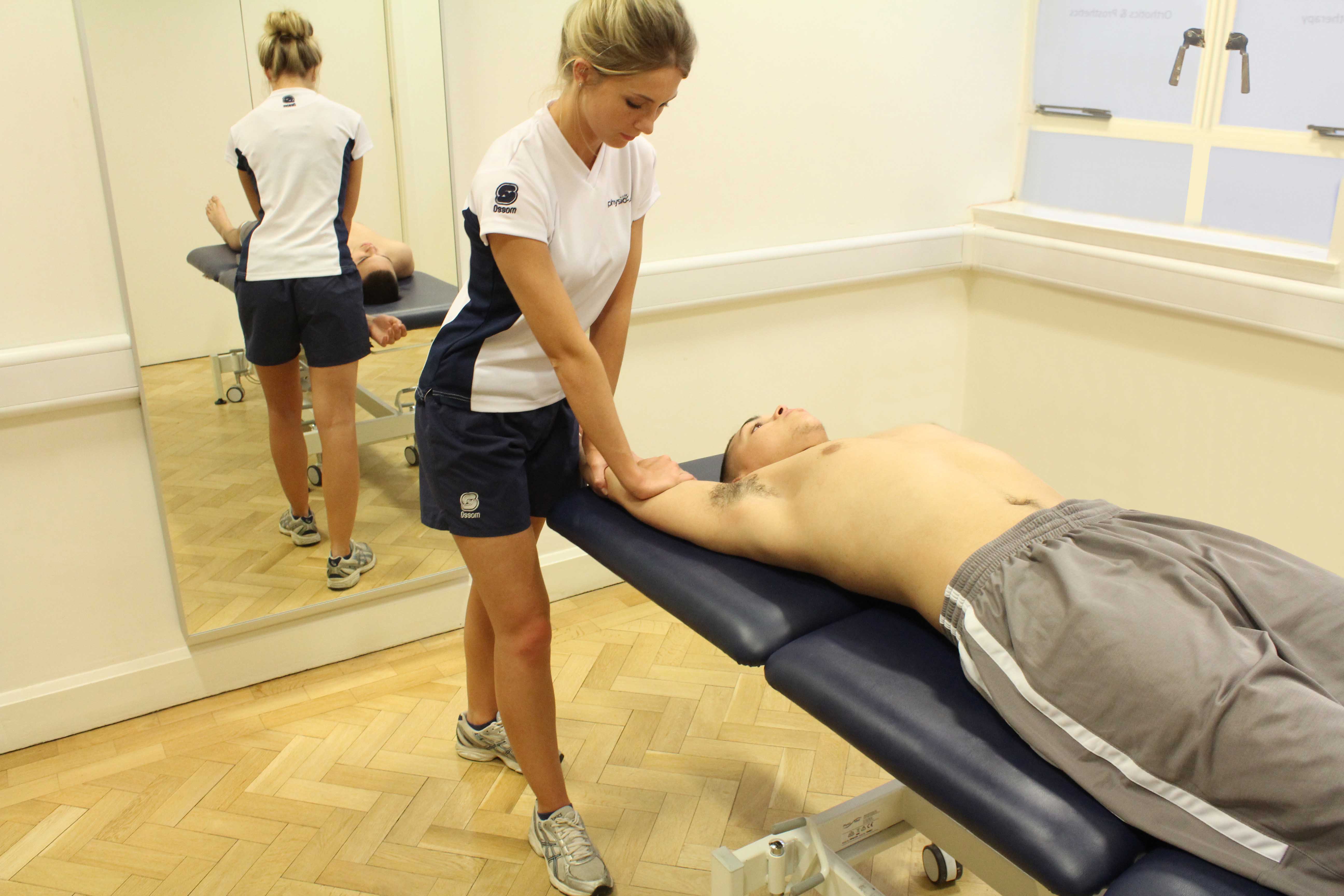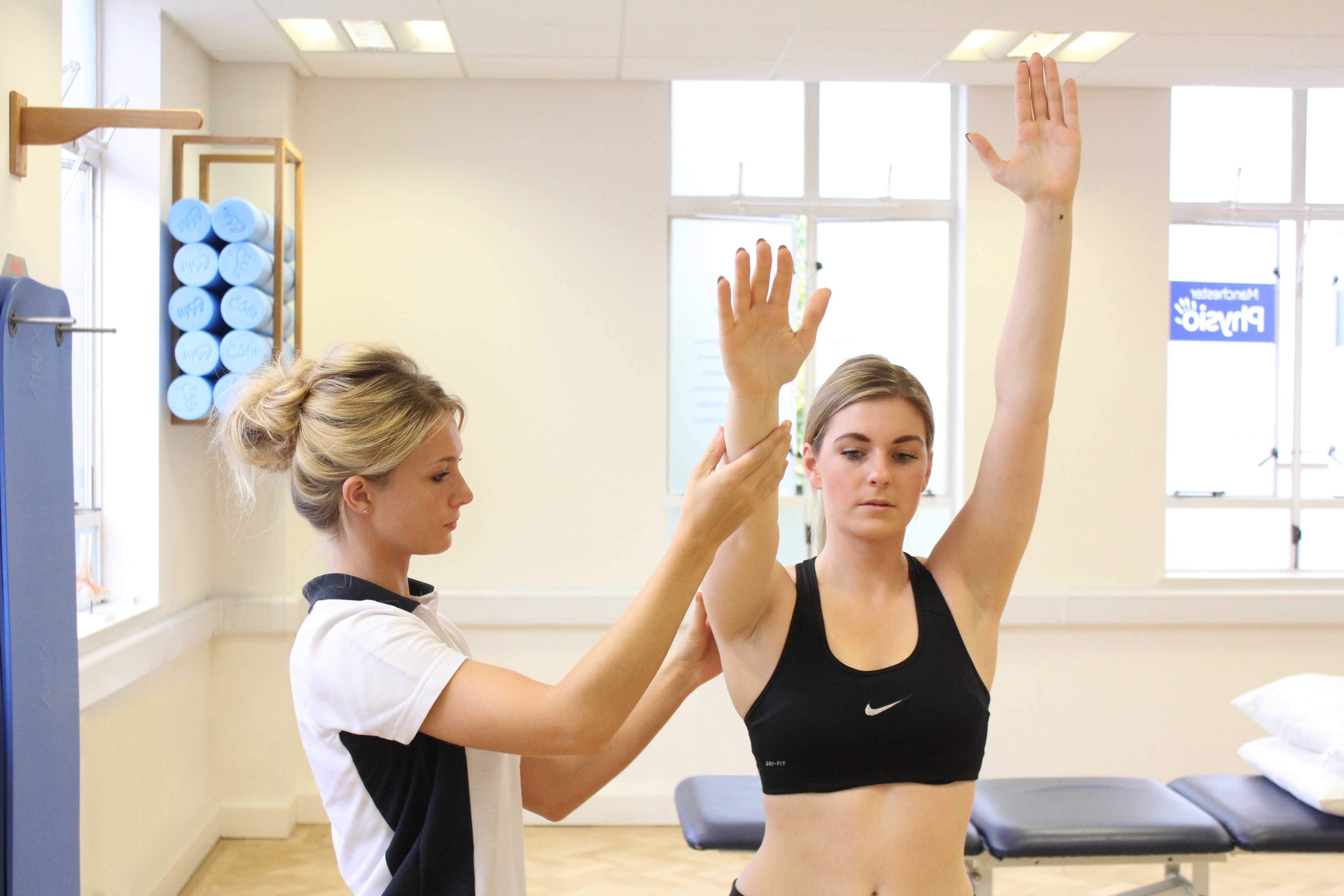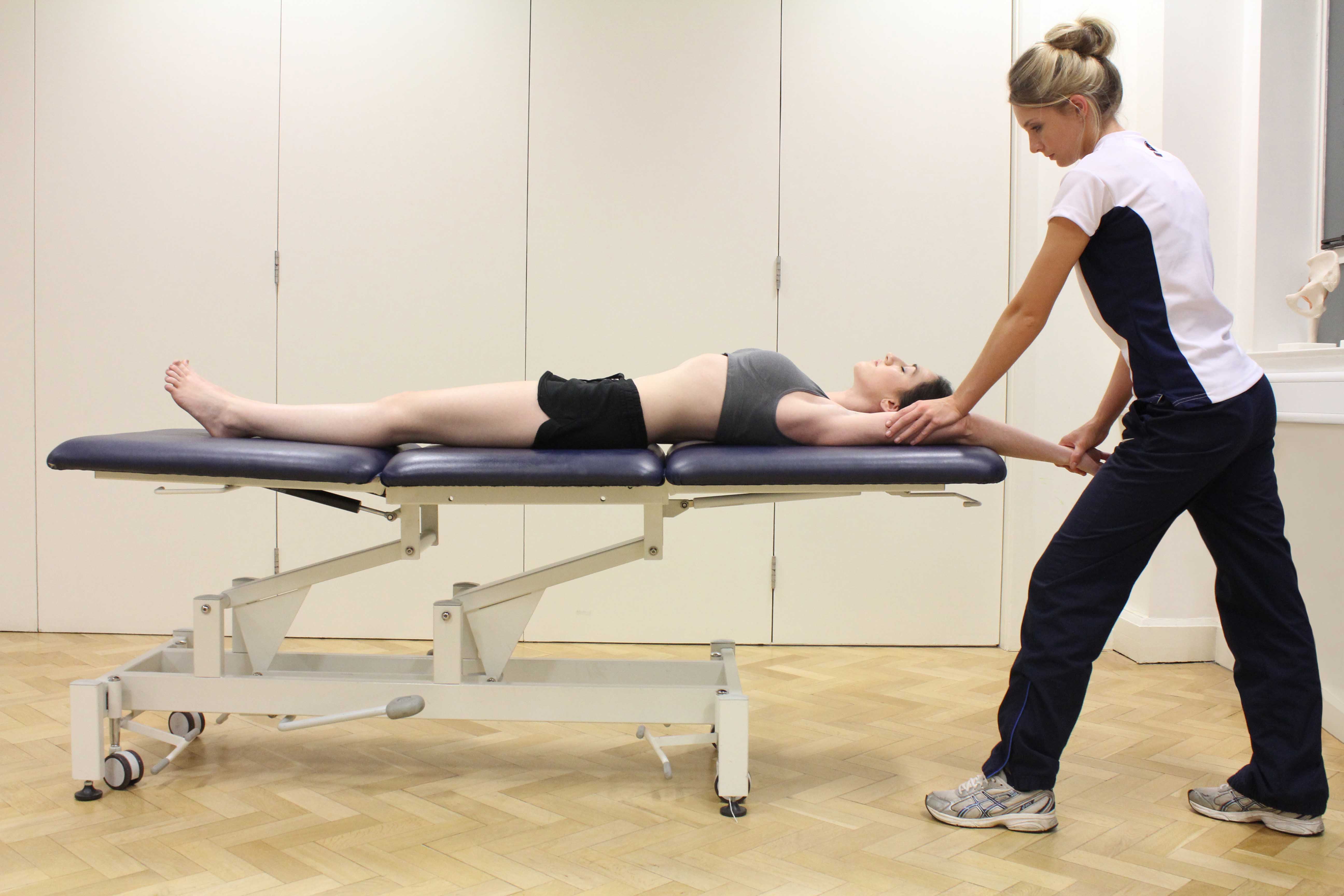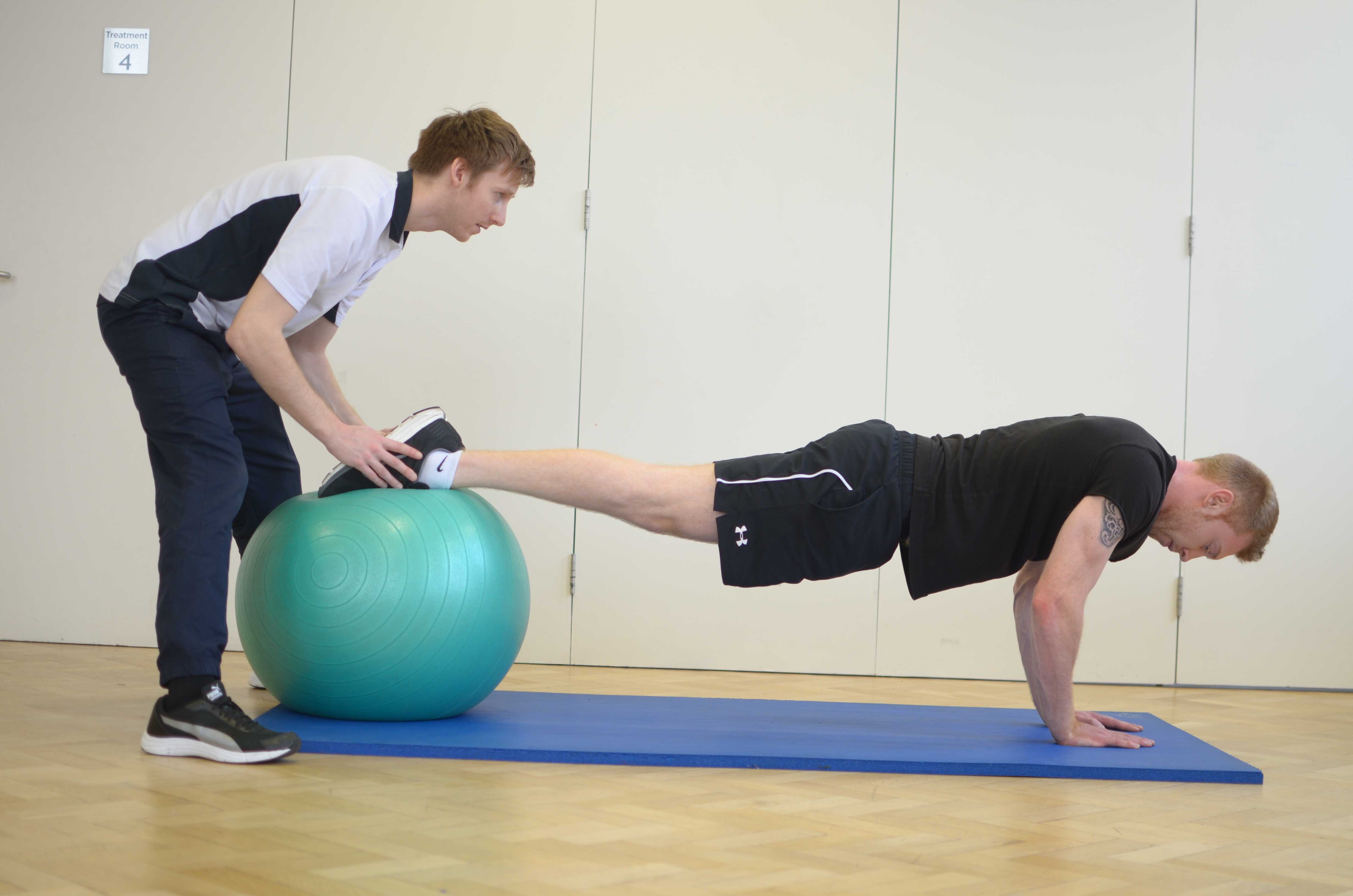Distal Biceps Avulsion Repair
Distal biceps tendon repair surgery is performed on a complete rupture of the biceps tendon at the elbow (avulsion). Your biceps or, bicep brachii, is made of two components the long head and short head, which converge to form one muscle. Your bicep is a powerful elbow flexor and forearm supinator (turning your palm upwards) which provides you with a vast amount of movement and strength. It attaches superiorly (at the top) to the rim of your shoulder socket and distally onto your radial tuberosity (end of your arm bone).
Distal rupture of the biceps tendon occurs at its distal insertion on the radial tuberosity. This can occur either through an acute e.g. violent traumaor chronic injury e.g. tendon degeneration and results in the tendon being torn away from the bone. This creates a visible shortened biceps or ‘popeye’ sign when you contract your biceps as the muscle retracts towards its proximal origin. If you have ruptured your biceps you will normally hear a snap (when the tendon has torn off the bone), have significant swelling and bruising and a distinct lack of elbow flexion and supination strength
Depending on your age, lifestyle and circumstances surgery is performed to reattach the muscle. This surgery is generally not opted for in elderly patients who do not require its function unlike young, athletic and working populations. The torn tendon is reattached to the bone using bone anchors which are drilled into your radius and sutures which grip the muscle tendon in place. Occasionally, a bicep tenodesis will be performed where the bicep tendon is attached to your brachialis muscle instead of the bone. This is usually done when there has been significant delay to your surgery or the outcome is more favourable.
 Above: Soft tissue massage of the bicep muscle in the upper arm
Above: Soft tissue massage of the bicep muscle in the upper armPhysiotherapy prior to Distal Bicep Avulsion Repair
Physiotherapy prior to distal bicep avulsion surgery can help to alleviate symptoms and assist in the management of your injury. Physio.co.uk can also help to prevent any secondary problems occurring as a result of incorrect or abnormal movements adopted to compensate for your initial injury. Physio.co.uk will provide effective rehabilitation and management methods to allow you to continue to functionally use your arm as well as provide a positive platform for post surgical rehabilitation. Your treatment will include:
- Thorough assessment of whole upper limb
- Cryotherapy
- Pain management
- Protective bracing
- Passive and active assisted movements
- Stretching regime
- Scapula setting exercises
- Strengthening programme for upper and lower arm
- Advice on surgery and rehab
Symptoms following Distal Bicep Avulsion Repair
Following distal bicep avulsion repair surgery, your arm will be held in a posterior splint for 1-2 weeks to prevent movement and aid in the recovery of the reattached tendon. Subsequent to surgery it is normal for you to experience symptoms including:
- Pain
- Swelling
- Bruising
- Stiffness
Physiotherapy following Distal Biceps Avulsion Repair
Following distal biceps avulsion repair, Physio.co.uk will perform a thorough assessment of your arm and upper limb to ascertain problems and weaknesses that you have. A treatment programme will be developed specific to your problems and in agreement with surgical protocols to ensure accuracy and efficacy in rehabilitation.
 Above: Active stretches and mobilisation of the upper arm
Above: Active stretches and mobilisation of the upper armWeeks 1-3
Focus initially with Physio.co.uk will be on managing acute symptoms and helping to minimise post operative complications. Your arm will be fixed at 90˚ in either a posterior splint or a hinged elbow brace preventing any active movement with early mobilisation encouraged within the restraints of your elbow hinged brace. Treatment will include:
- Cryotherapy
- Pain management
- Wound management
- Passive movement of flexion, extension, pronation and supination – restricted to 90˚
- Isometric strengthening of shoulder musculature and triceps
- Range of movement exercises for wrist and hand
- Pendular exercises
- Scar massage
- Advice and education
Weeks 3-6
Your elbow brace will now be locked to 60˚ and encouraged to increase range of movement as tolerated. Your brace will be altered each week, reducing its fixed position to encourage and improve range of movement Active movement of your arm can begin and light strengthening work can commence. Physio.co.uk will continually assess your arm gauging the development of your surgery and focussing treatment around your specific requirements. Treatment will include:
- Continuation of previous exercises
- Single plane active range of movement within restraints of your brace
- Passive and active assisted movements between full flexion and approximately 60-30˚extension.
- Soft tissue therapy
- Friction massage to bicep tendon
- Shoulder trigger point therapy
- Gentle stretches
- Begin isometric strengthening of biceps
- Scapular stability exercises
- Grip strengthening
 Above: Soft tissue massage and stretch of the tricep muscle of the upper arm
Above: Soft tissue massage and stretch of the tricep muscle of the upper armWeeks 6-12
Following 6 weeks of physiotherapy with Physio.co.uk you will have seen a steady but significant increase in movement and function of your arm. Physio.co.uk will continue to progress your rehabilitation so that your movement, strength and function is constantly and positively improving. Treatment will include:
- Elbow brace will be reduced from 30-0˚ and discontinued by 8 weeks
- Passive, active assisted and active range of movement exercises to reach full range of motion
- Eccentric strengthening
- Begin combined movements e.g. flexion and supination
- Progressive resisted bicep exercise programme
- Progressive resisted strengthening programme for triceps, supinators and pronators
- Rotator cuff, deltoid and scapular strengthening programme
- Continued stretching programme
- Introduce functional and sport specific exercises
Weeks 12-16
Following 12 weeks of physiotherapy you will have discontinued the use of your sling and be well on your way to recovery. You will be nearing full movement and noticed a dramatic increase in the strength of your arm. Physio.co.uk will continue to progress your rehabilitation to achieve our combined goals of full movement and a return to function by the end of 16 weeks. Treatment will include:
- Achievement of full range of movement
- Muscular endurance training
- Attainment and maintenance of tissue length
- Soft tissue release
- Proprioceptive training
- Continued functional and sport specific training
 Above: Strengthening exercises for the upper arms
Above: Strengthening exercises for the upper armsWeeks 16+
This final stage of rehabilitation is focussed on the attainment of full movement, strength, endurance and function attained through advanced exercises and techniques. We are committed to returning you to your previous sporting or occupational ability and providing a long term management programme for any future problems that may arise. Full recovery can take between 4-6 months with Physio.co.uk fully committed to helping you achieve your maximum potential. Treatment will include:
- Advanced strengthening programme throughout range
- Advanced proprioceptive training
- High level sport specific training
- Long term home exercises programme
- Advice and long term management
Summary
Distal bicep avulsion is an uncommon injury where your bicep tendon tears of the bone (avulses) and its attachment on your radius. This can happen through repetitive trauma, overuse or through direct trauma. A surgical procedure is needed to reattach the avulsed tendon back to the bone. Your bicep is a powerful elbow flexor and supinator and so when injured will result in a significant loss of movement, strength and function. Physiotherapy becomes an essential component of rehabilitation following surgery in order to return you to your previous level of function. Physio.co.uk will provide a comprehensive and extensive rehabilitation programme focussed on personal goals and a return to your previous functional ability. Call Physio.co.uk now on 0330 088 7800 for more information or to book an appointment please contact us.

 0330 088 7800
0330 088 7800


































